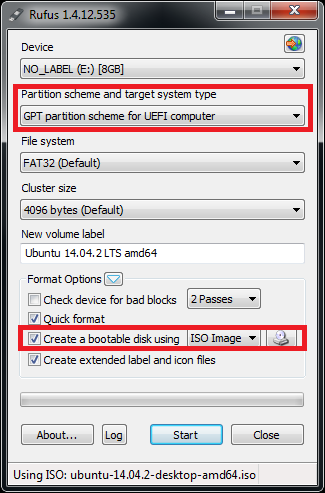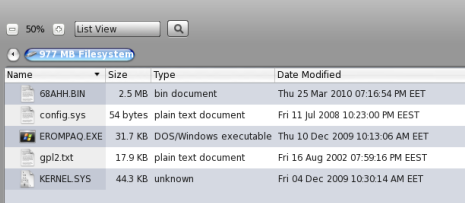By using task sequences in Configuration Manager, you can prepare a hard drive for BIOS to UEFI conversion, convert from BIOS to UEFI as part of the in-place upgrade process, and collect UEFI information as part of hardware inventory. You can also choose to run the MBR2GPT.EXE tool when in Windows PE instead of in the full operating system. FL1 file is not an UEFI capsule, so the procedure to extract the BIOS part below. Raspberry Pi with a Linux distribution installed, e.g. Raspian; Pomona adapter matching the SPI flash IC case, in most cases SO-IC8. Wine gauj19us.exe.
22 November 2017 at 14:01 Yes, it works for SSDs, too. I have 2 drives: SSD is C:, and data drive is a 2TB hybrid. The larger 2TB drive was already GPT since it was easy to just set it to GPT before I copied data over from my old data drive.
But my C: was a bit more problematic Well, it’s a good idea to make a backup before you mess with your boot drive, but I have crazy backups. So I just pulled the trigger – and poof! My C: is an NVMe SSD, but it also works on SATA SSDs just fine.
18 September 2018 at 12:32 Oh man Since I switched to using an SSD for my boot drive, I never have multiple partitions on the primary drive. Microsoft visio standard 2016 download. I did that a lot in the past, and I ALWAYS had some problem or another. For example, ages ago, I had 1 HDD with Win XP.
Tried to dual-boot with linux. Then I decided that linux had to go because wasn’t playing nicely with the Win machines on the network (and vice versa), and I tried to remove those extra partitions without screwing up Windows HA! I had to buy partitioning software to get ‘er done without losing everything.
Download 7-Zip run it and restart your machine. Download the BIOS file and save it to the desk top. Right click on the BIOS file and \'extract files\' You should have this: and then open Rompaq to this: Take your flash drive and right click on in \'Computer\' to format it to FAT 32 and drag the BIN file onto the flash drive. The BIN file is the actual BIOS information and when I fixed my HDX, that\'s all that was needed on the flashdrive. (no need to make it bootable) Do not pull the flash drive out from the USB port, in W7 go to your tool bar and click on \'show hidden icons\' beside the flag.
There will be an option there for the USB port to safely eject the flash drive. In Vista you right click on the flash drive in \'Computer\' to eject. Remove the battery and adapter on the bricked computer and hold the power down for 30 seconds. Plug in the flash drive in one of the USB ports on the left side of the machine, hold the \'Windows\' and \'B' key at the same time and plug the adapter in. Power up and the laptop should start to beep, when it does, release the key\'s. On my HDX I had to repeat these steps twice before it worked. I later took a healthy mother board with a retail copy of W7 on the hard drive to see if I could flash the BIOS in this way, it did not work until the third try.
I wanted to find out if there had be any HP partitions on the hard drive, which there were none of course. The BIOS file my HDX was named FD and I later found that I had to change its name to BIN, you may have to do the same if this does not work. Change it from 68AHH.BIN to 68AH.BIN and try again. I don\'t know if this will work, but you have nothing to loose. ++++++++++++++++++++++++++++++++++++++++++++++++++++++++++++++++++++++++++++++++++++++++++++++++ If any one attempts this on their machine please start a new thread and send me a PM of the link to that thread. This way I can assure you get the correct BIOS file on the flash drive or if it\'s even possible. (I will need your full model and part number on the underside of your laptop) This procedure is not endorsed by HP and is experimental by nature, so this is done at your own risk, however at this point it does look promising.


HaggisCat, sorry for the delayed answer but I was quite busy with other stuff. In short - I tried similar solution before your answer. However, I did not used 7-zip to unpack the bios executable - I just run it and saw where it stores the files for the following process, which even included creation of a bootable usb bios rescue drive. The exe simply performs quick format of the drive, makes it bootable, even not necessary, and copy in the flash master directory the following files: I tried then to use the stick to bring the brick back to life but without any result - it started to load something from the flash (I saw the led of the flash blinking for a couple of seconds) and after that at least started the CPU fan, but without any other activity (ok, the Caps Lock led was blinking) and/or sounds for more than 10 min. I repeated the operation a couple of times, even tried the old BIOS version but without any success.
...'>Efi Flash Exe Converter(18.12.2018)By using task sequences in Configuration Manager, you can prepare a hard drive for BIOS to UEFI conversion, convert from BIOS to UEFI as part of the in-place upgrade process, and collect UEFI information as part of hardware inventory. You can also choose to run the MBR2GPT.EXE tool when in Windows PE instead of in the full operating system. FL1 file is not an UEFI capsule, so the procedure to extract the BIOS part below. Raspberry Pi with a Linux distribution installed, e.g. Raspian; Pomona adapter matching the SPI flash IC case, in most cases SO-IC8. Wine gauj19us.exe.
22 November 2017 at 14:01 Yes, it works for SSDs, too. I have 2 drives: SSD is C:, and data drive is a 2TB hybrid. The larger 2TB drive was already GPT since it was easy to just set it to GPT before I copied data over from my old data drive.
But my C: was a bit more problematic Well, it’s a good idea to make a backup before you mess with your boot drive, but I have crazy backups. So I just pulled the trigger – and poof! My C: is an NVMe SSD, but it also works on SATA SSDs just fine.
18 September 2018 at 12:32 Oh man Since I switched to using an SSD for my boot drive, I never have multiple partitions on the primary drive. Microsoft visio standard 2016 download. I did that a lot in the past, and I ALWAYS had some problem or another. For example, ages ago, I had 1 HDD with Win XP.
Tried to dual-boot with linux. Then I decided that linux had to go because wasn’t playing nicely with the Win machines on the network (and vice versa), and I tried to remove those extra partitions without screwing up Windows HA! I had to buy partitioning software to get ‘er done without losing everything.
Download 7-Zip run it and restart your machine. Download the BIOS file and save it to the desk top. Right click on the BIOS file and \'extract files\' You should have this: and then open Rompaq to this: Take your flash drive and right click on in \'Computer\' to format it to FAT 32 and drag the BIN file onto the flash drive. The BIN file is the actual BIOS information and when I fixed my HDX, that\'s all that was needed on the flashdrive. (no need to make it bootable) Do not pull the flash drive out from the USB port, in W7 go to your tool bar and click on \'show hidden icons\' beside the flag.
There will be an option there for the USB port to safely eject the flash drive. In Vista you right click on the flash drive in \'Computer\' to eject. Remove the battery and adapter on the bricked computer and hold the power down for 30 seconds. Plug in the flash drive in one of the USB ports on the left side of the machine, hold the \'Windows\' and \'B' key at the same time and plug the adapter in. Power up and the laptop should start to beep, when it does, release the key\'s. On my HDX I had to repeat these steps twice before it worked. I later took a healthy mother board with a retail copy of W7 on the hard drive to see if I could flash the BIOS in this way, it did not work until the third try.
I wanted to find out if there had be any HP partitions on the hard drive, which there were none of course. The BIOS file my HDX was named FD and I later found that I had to change its name to BIN, you may have to do the same if this does not work. Change it from 68AHH.BIN to 68AH.BIN and try again. I don\'t know if this will work, but you have nothing to loose. ++++++++++++++++++++++++++++++++++++++++++++++++++++++++++++++++++++++++++++++++++++++++++++++++ If any one attempts this on their machine please start a new thread and send me a PM of the link to that thread. This way I can assure you get the correct BIOS file on the flash drive or if it\'s even possible. (I will need your full model and part number on the underside of your laptop) This procedure is not endorsed by HP and is experimental by nature, so this is done at your own risk, however at this point it does look promising.


HaggisCat, sorry for the delayed answer but I was quite busy with other stuff. In short - I tried similar solution before your answer. However, I did not used 7-zip to unpack the bios executable - I just run it and saw where it stores the files for the following process, which even included creation of a bootable usb bios rescue drive. The exe simply performs quick format of the drive, makes it bootable, even not necessary, and copy in the flash master directory the following files: I tried then to use the stick to bring the brick back to life but without any result - it started to load something from the flash (I saw the led of the flash blinking for a couple of seconds) and after that at least started the CPU fan, but without any other activity (ok, the Caps Lock led was blinking) and/or sounds for more than 10 min. I repeated the operation a couple of times, even tried the old BIOS version but without any success.
...'>Efi Flash Exe Converter(18.12.2018)
